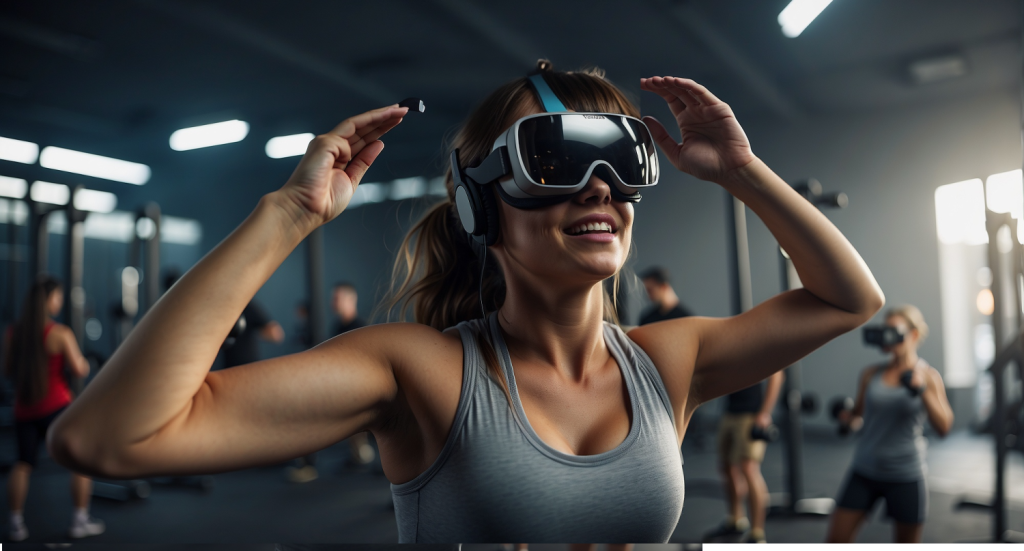

Virtual reality (VR) and augmented reality (AR) offer fascinating new perspectives in sport, both in the training of athletes and in fan interaction. Here are some innovative examples:
VR offers coaches and players an immersive and interactive experience that provides deeper insights into the team's performance and the strengths and weaknesses of opponents. VR simulations allow coaches to make decisions in real time and understand how to exploit opponents' weaknesses. VR also transforms player development as athletes can practice their skills in realistic and diverse scenarios. VR can also remove barriers to learning and training by giving players from all over the world access to simulations. However, the use of VR in coaching and tactical analysis is still in its infancy and further development of the technology will bring more innovative applications.
Virtual reality (VR) has opened up a new dimension in the search for talent in sport. Scouts can assess players more comprehensively and objectively in a simulated environment. VR simulations enable an accurate assessment of performance under pressure and in real time. In addition to physical observation, scouts can also assess players' mental strength and resilience. VR technology makes the scouting process more efficient and cost-effective by reducing travel time and costs. As a result, players from around the world can be evaluated without scouts having to travel. The NFL has partnered with SportsEngine VR to develop a VR scouting platform. This has allowed promising young players to be identified and developed. VR has also played a crucial role in talent development by allowing personalized training programs to be created. Through the use of VR, new talents can be discovered, regardless of their geographical location or physical impairments. As the technology evolves, VR simulations are becoming more realistic and allow for more detailed player evaluation. VR is a catalyst for change in the sports industry and will shape the future of sport.
In the world of sport, the connection between athletes and fans is crucial to creating an exciting and engaging atmosphere. This interaction has traditionally been limited to live events, media coverage and social media. But virtual reality (VR) has exponentially expanded the possibilities to enhance this connection.
Virtual reality (VR) offers fans immersive and authentic experiences that go beyond traditional spectating. Fans can enter the world of their favorite athletes, experience the game from their perspective and feel the thrill of competition first-hand.
VR simulations allow fans to participate in training sessions, practices and even games alongside their favorite players. This type of engagement creates a deeper connection between fans and athletes, resulting in a more personal and meaningful experience.
VR can also be used to create compelling storytelling and give fans an insight into the lives of athletes beyond the pitch or court. Fans can follow the athletes on their training journey, learn more about their personal motivations and connect with them on a human level.
This accessibility goes beyond professional athletes and offers fans the opportunity to connect with aspiring athletes and learn more about their journeys. VR can also showcase the diversity of athletes and the challenges they face, promoting inclusivity and inspiring future generations.
In addition, VR has the potential to break down geographical barriers and allow fans to experience sporting events from anywhere in the world. Virtual reality (VR) can be particularly beneficial for fans in remote areas or for those who are unable to attend live matches.
It can also improve accessibility for fans with disabilities by allowing them to experience the excitement of sport in a way that was previously unattainable. This inclusivity promotes a more welcoming and inclusive sporting environment for all fans.
In the field of sport, injuries are not uncommon and often lead to career setbacks and loss of performance. As technology advances, sports medicine is focusing on innovative approaches to injury prevention and rehabilitation. Among these advances, virtual reality (VR) stands out as a promising tool.
VR-based injury prevention programs offer immersive and interactive simulations that allow athletes to train in a safe and controlled environment, recreating movements and situations from the real world. The German Football Association (DFB) has developed a VR training program that has led to a 20 % reduction in injuries.
VR rehabilitation offers a personalized and restorative approach with tailored plans based on individual injuries and recovery phases. This personalized approach ensures effective recovery and a shorter recovery time.
VR has the potential to overcome geographical barriers to rehabilitation. Athletes can receive individualized treatment from anywhere in the world.
The future of VR in sports injury prevention and rehabilitation is bright. It has the potential to revolutionize injury prevention, accelerate recovery and help athletes return to their sport stronger than ever.

Are you interested in developing a virtual reality or 360° application? You may still have questions about budget and implementation. Feel free to contact me.
I am looking forward to you
Clarence Dadson CEO Design4real






